Wolfgang Ketter
Deep Causal Learning to Explain and Quantify The Geo-Tension's Impact on Natural Gas Market
Jul 15, 2024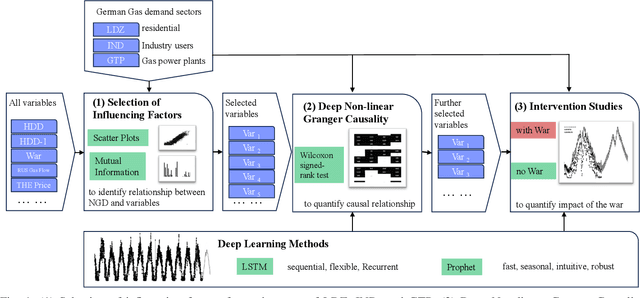
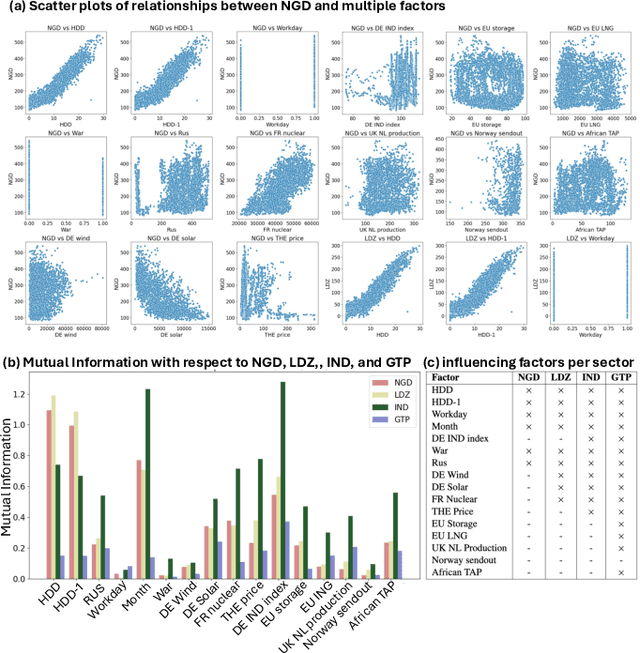
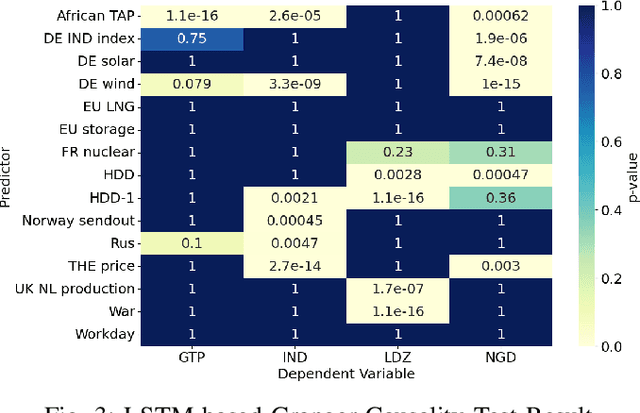
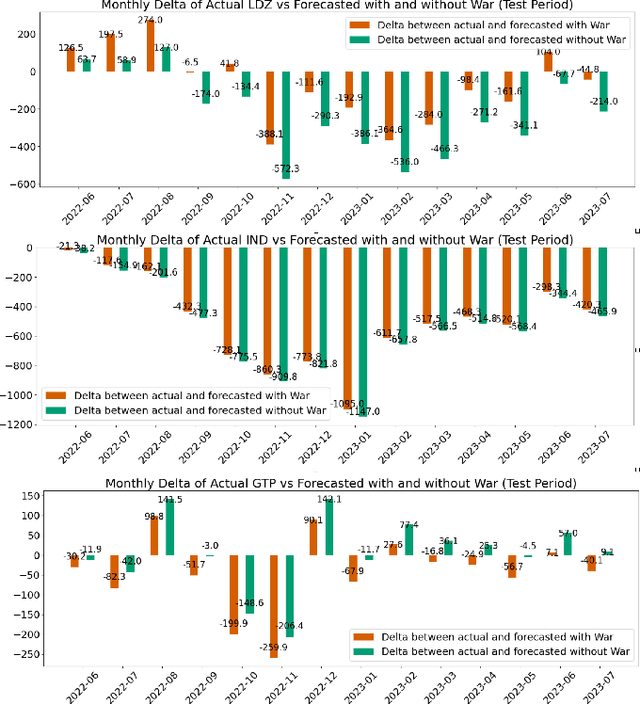
Abstract:Natural gas demand is a crucial factor for predicting natural gas prices and thus has a direct influence on the power system. However, existing methods face challenges in assessing the impact of shocks, such as the outbreak of the Russian-Ukrainian war. In this context, we apply deep neural network-based Granger causality to identify important drivers of natural gas demand. Furthermore, the resulting dependencies are used to construct a counterfactual case without the outbreak of the war, providing a quantifiable estimate of the overall effect of the shock on various German energy sectors. The code and dataset are available at https://github.com/bonaldli/CausalEnergy.
GuideLight: "Industrial Solution" Guidance for More Practical Traffic Signal Control Agents
Jul 15, 2024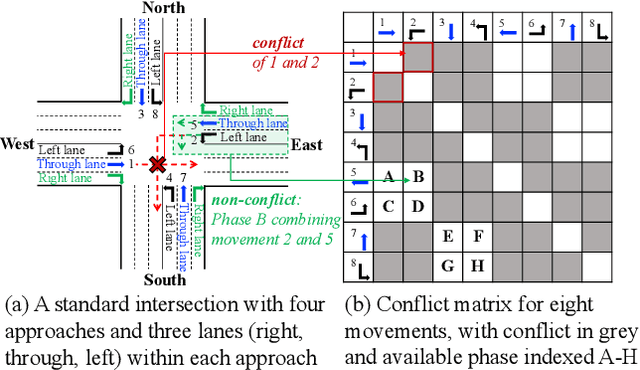
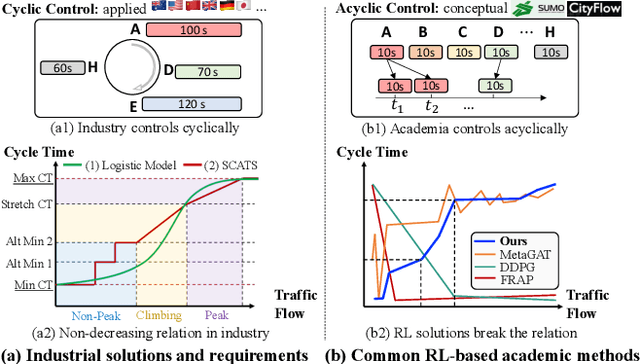
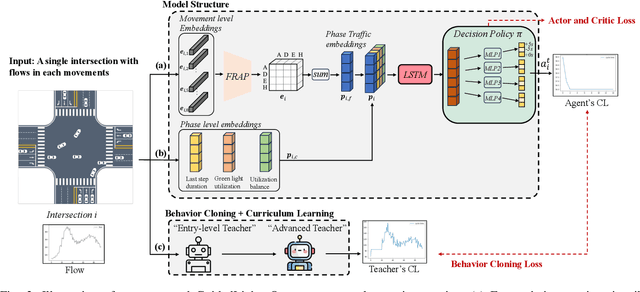

Abstract:Currently, traffic signal control (TSC) methods based on reinforcement learning (RL) have proven superior to traditional methods. However, most RL methods face difficulties when applied in the real world due to three factors: input, output, and the cycle-flow relation. The industry's observable input is much more limited than simulation-based RL methods. For real-world solutions, only flow can be reliably collected, whereas common RL methods need more. For the output action, most RL methods focus on acyclic control, which real-world signal controllers do not support. Most importantly, industry standards require a consistent cycle-flow relationship: non-decreasing and different response strategies for low, medium, and high-level flows, which is ignored by the RL methods. To narrow the gap between RL methods and industry standards, we innovatively propose to use industry solutions to guide the RL agent. Specifically, we design behavior cloning and curriculum learning to guide the agent to mimic and meet industry requirements and, at the same time, leverage the power of exploration and exploitation in RL for better performance. We theoretically prove that such guidance can largely decrease the sample complexity to polynomials in the horizon when searching for an optimal policy. Our rigid experiments show that our method has good cycle-flow relation and superior performance.
A Critical Perceptual Pre-trained Model for Complex Trajectory Recovery
Nov 05, 2023



Abstract:The trajectory on the road traffic is commonly collected at a low sampling rate, and trajectory recovery aims to recover a complete and continuous trajectory from the sparse and discrete inputs. Recently, sequential language models have been innovatively adopted for trajectory recovery in a pre-trained manner: it learns road segment representation vectors, which will be used in the downstream tasks. However, existing methods are incapable of handling complex trajectories: when the trajectory crosses remote road segments or makes several turns, which we call critical nodes, the quality of learned representations deteriorates, and the recovered trajectories skip the critical nodes. This work is dedicated to offering a more robust trajectory recovery for complex trajectories. Firstly, we define the trajectory complexity based on the detour score and entropy score and construct the complexity-aware semantic graphs correspondingly. Then, we propose a Multi-view Graph and Complexity Aware Transformer (MGCAT) model to encode these semantics in trajectory pre-training from two aspects: 1) adaptively aggregate the multi-view graph features considering trajectory pattern, and 2) higher attention to critical nodes in a complex trajectory. Such that, our MGCAT is perceptual when handling the critical scenario of complex trajectories. Extensive experiments are conducted on large-scale datasets. The results prove that our method learns better representations for trajectory recovery, with 5.22% higher F1-score overall and 8.16% higher F1-score for complex trajectories particularly. The code is available at https://github.com/bonaldli/ComplexTraj.
Choose A Table: Tensor Dirichlet Process Multinomial Mixture Model with Graphs for Passenger Trajectory Clustering
Oct 31, 2023



Abstract:Passenger clustering based on trajectory records is essential for transportation operators. However, existing methods cannot easily cluster the passengers due to the hierarchical structure of the passenger trip information, including multiple trips within each passenger and multi-dimensional information about each trip. Furthermore, existing approaches rely on an accurate specification of the clustering number to start. Finally, existing methods do not consider spatial semantic graphs such as geographical proximity and functional similarity between the locations. In this paper, we propose a novel tensor Dirichlet Process Multinomial Mixture model with graphs, which can preserve the hierarchical structure of the multi-dimensional trip information and cluster them in a unified one-step manner with the ability to determine the number of clusters automatically. The spatial graphs are utilized in community detection to link the semantic neighbors. We further propose a tensor version of Collapsed Gibbs Sampling method with a minimum cluster size requirement. A case study based on Hong Kong metro passenger data is conducted to demonstrate the automatic process of cluster amount evolution and better cluster quality measured by within-cluster compactness and cross-cluster separateness. The code is available at https://github.com/bonaldli/TensorDPMM-G.
Tensor Dirichlet Process Multinomial Mixture Model for Passenger Trajectory Clustering
Jun 23, 2023Abstract:Passenger clustering based on travel records is essential for transportation operators. However, existing methods cannot easily cluster the passengers due to the hierarchical structure of the passenger trip information, namely: each passenger has multiple trips, and each trip contains multi-dimensional multi-mode information. Furthermore, existing approaches rely on an accurate specification of the clustering number to start, which is difficult when millions of commuters are using the transport systems on a daily basis. In this paper, we propose a novel Tensor Dirichlet Process Multinomial Mixture model (Tensor-DPMM), which is designed to preserve the multi-mode and hierarchical structure of the multi-dimensional trip information via tensor, and cluster them in a unified one-step manner. The model also has the ability to determine the number of clusters automatically by using the Dirichlet Process to decide the probabilities for a passenger to be either assigned in an existing cluster or to create a new cluster: This allows our model to grow the clusters as needed in a dynamic manner. Finally, existing methods do not consider spatial semantic graphs such as geographical proximity and functional similarity between the locations, which may cause inaccurate clustering. To this end, we further propose a variant of our model, namely the Tensor-DPMM with Graph. For the algorithm, we propose a tensor Collapsed Gibbs Sampling method, with an innovative step of "disband and relocating", which disbands clusters with too small amount of members and relocates them to the remaining clustering. This avoids uncontrollable growing amounts of clusters. A case study based on Hong Kong metro passenger data is conducted to demonstrate the automatic process of learning the number of clusters, and the learned clusters are better in within-cluster compactness and cross-cluster separateness.
MM-DAG: Multi-task DAG Learning for Multi-modal Data -- with Application for Traffic Congestion Analysis
Jun 05, 2023



Abstract:This paper proposes to learn Multi-task, Multi-modal Direct Acyclic Graphs (MM-DAGs), which are commonly observed in complex systems, e.g., traffic, manufacturing, and weather systems, whose variables are multi-modal with scalars, vectors, and functions. This paper takes the traffic congestion analysis as a concrete case, where a traffic intersection is usually regarded as a DAG. In a road network of multiple intersections, different intersections can only have some overlapping and distinct variables observed. For example, a signalized intersection has traffic light-related variables, whereas unsignalized ones do not. This encourages the multi-task design: with each DAG as a task, the MM-DAG tries to learn the multiple DAGs jointly so that their consensus and consistency are maximized. To this end, we innovatively propose a multi-modal regression for linear causal relationship description of different variables. Then we develop a novel Causality Difference (CD) measure and its differentiable approximator. Compared with existing SOTA measures, CD can penalize the causal structural difference among DAGs with distinct nodes and can better consider the uncertainty of causal orders. We rigidly prove our design's topological interpretation and consistency properties. We conduct thorough simulations and one case study to show the effectiveness of our MM-DAG. The code is available under https://github.com/Lantian72/MM-DAG
 Add to Chrome
Add to Chrome Add to Firefox
Add to Firefox Add to Edge
Add to Edge